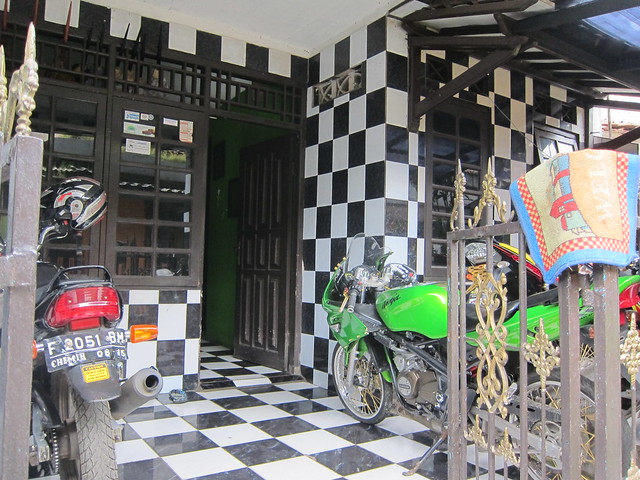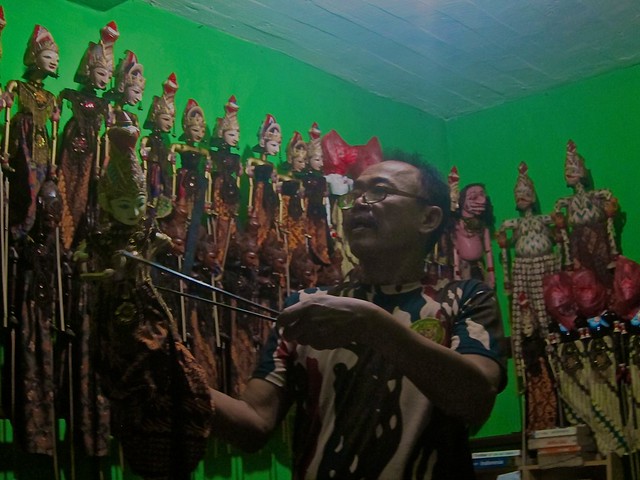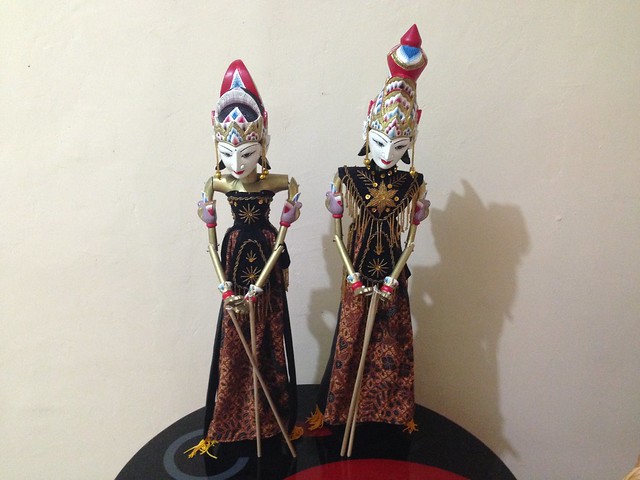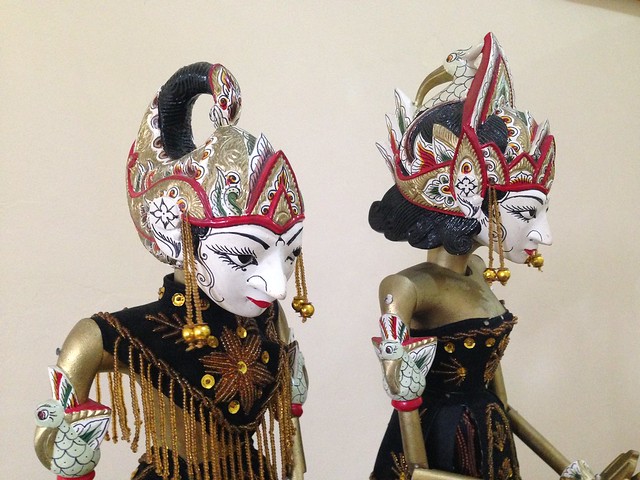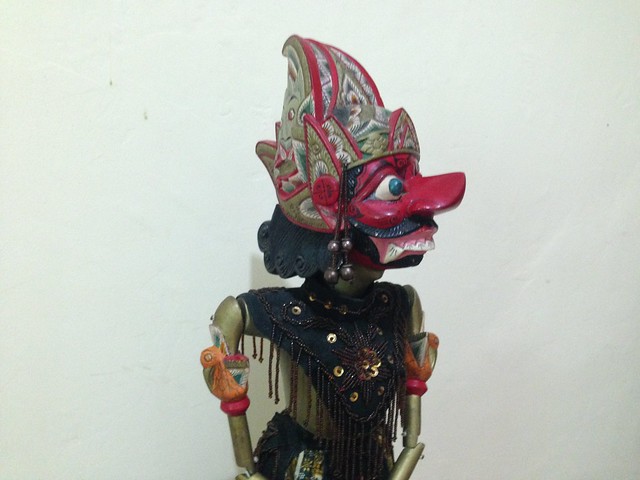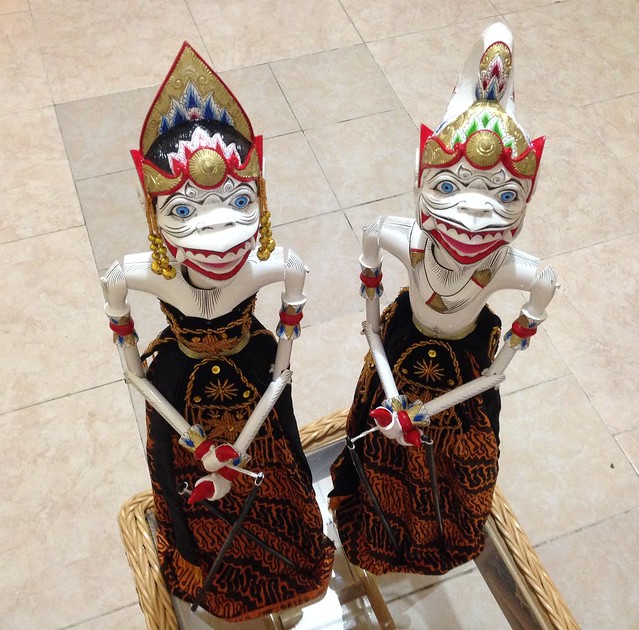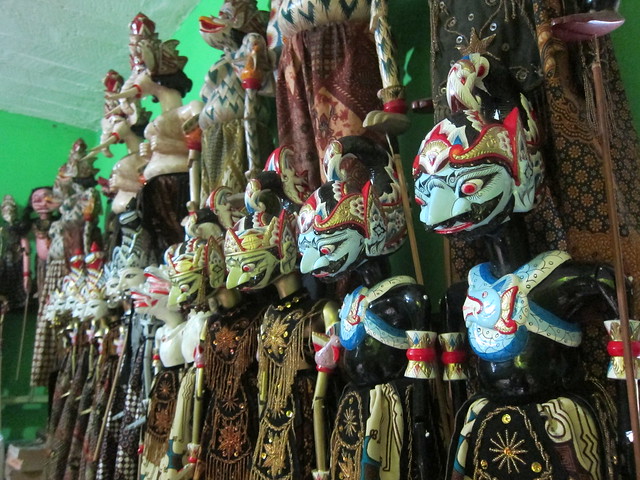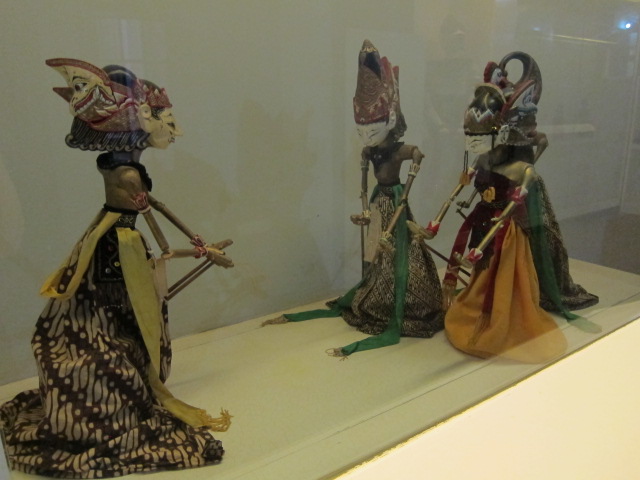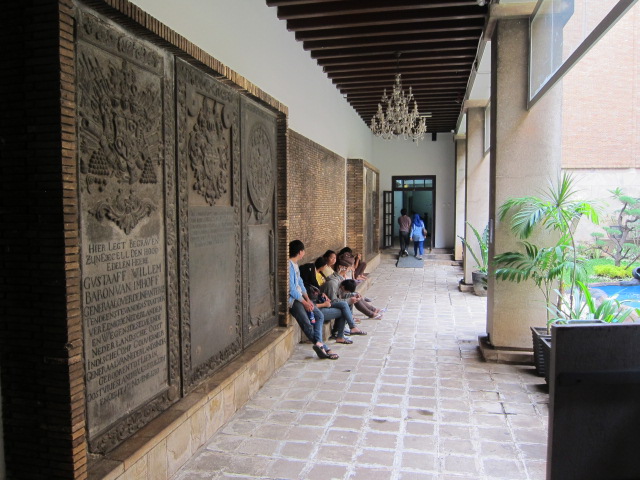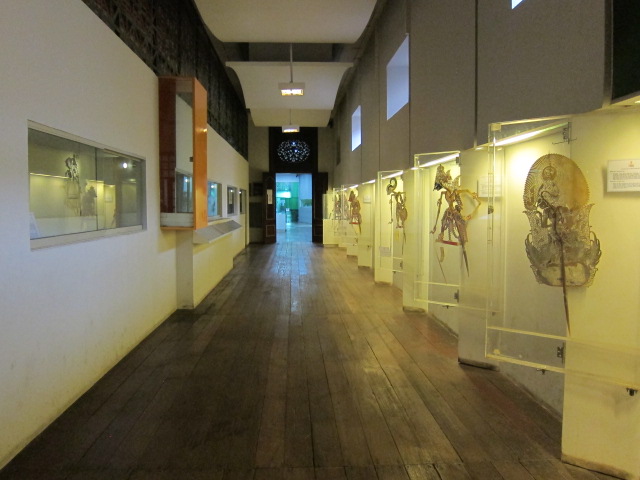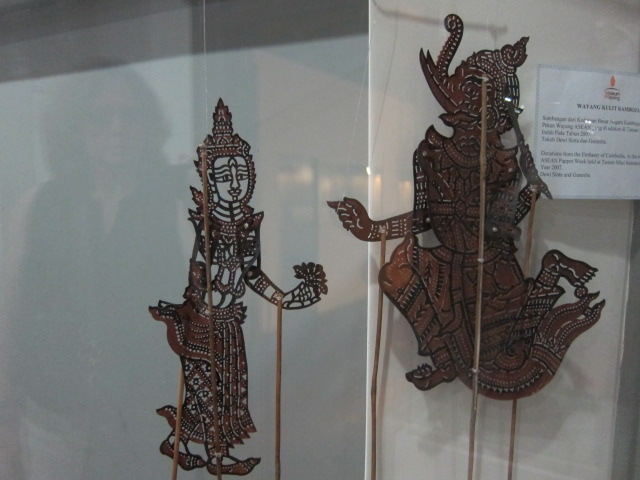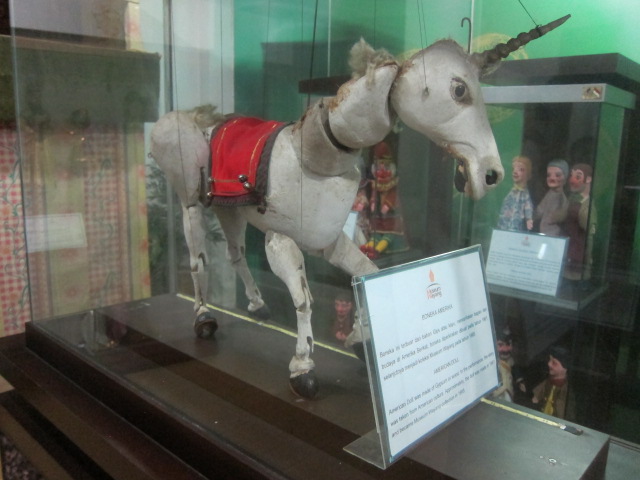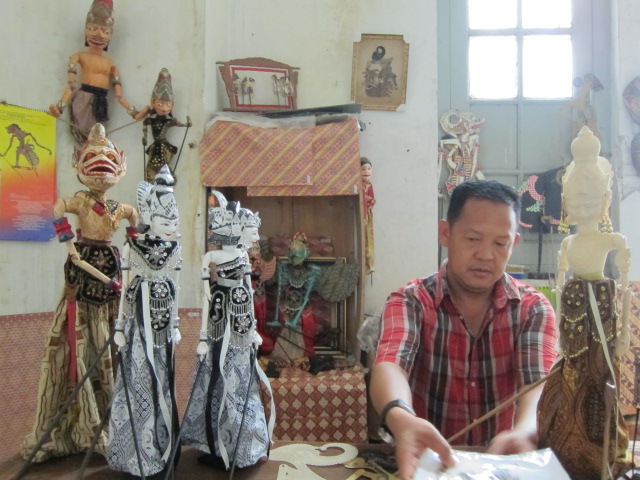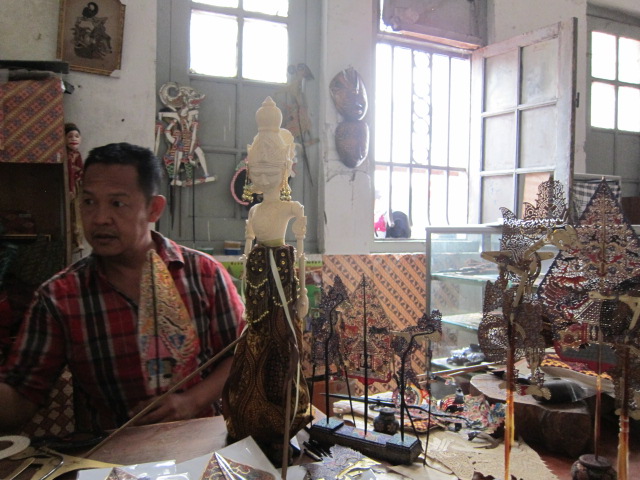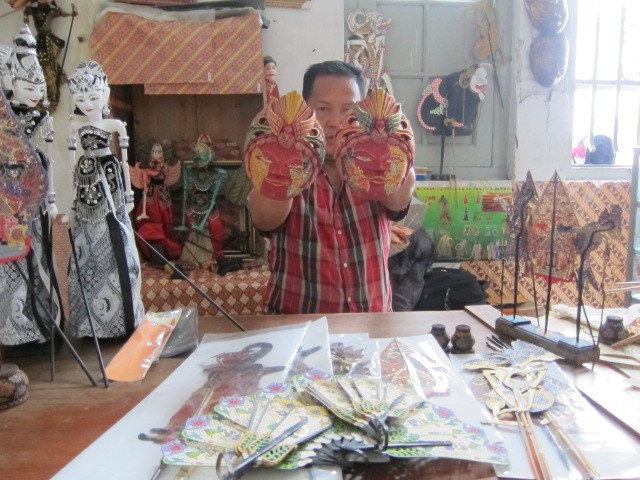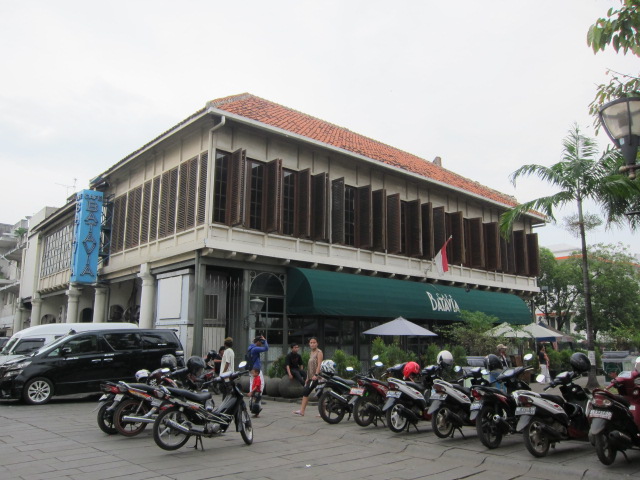Wayang puppet maker Dase Spartakus lives in Lebak Kantin, a tangled network of narrow lanes connected to Bogor’s middle-class Sempur neighborhood by an orange footbridge suspended across the Ciliwung River.
The iron bridge sways and bounces under the weight of pedestrians and motorbikes — during rainy season only a frightening few feet above the angry river, which churns its way towards Indonesia’s capital Jakarta en route to the Java Sea.
English-speaking Pak Dase has lived in the impoverished area since his birth in September 1956, and he’s been in the puppet business for more than 30 years. His house is painted bright green inside, the floors and exterior are covered with black and white ceramic tiles, reminiscent of Javanese and Balinese poleng cloth, which symbolises opposites.
Not only does he make the “wayang golek”, or rod puppets, himself, but he also serves as a broker, selling puppets made by his uncle, a sixth-generation puppet maker.
Pak Dase, who is father of 11 children, has a great sense of humor. He takes the puppets from the walls to demonstrate how they can perform their roles — laughing as he manipulates them, telling abridged versions of the old epic tales they are meant to bring to life.
Although I bought Rama, Sinta, Arjuna, Srikandi and Rawana, I really wanted Hanoman, the king of the monkeys, who plays a central role in the Javanese epic tale Ramayana.
— Sinta and Rama —
— Arjuna and Srikandi —
— Rawana —
In the 10th-century story based on a Hindu legend, Hanoman saves the princess Sinta, whose husband Rama goes to war against Rawana, her kidnapper and the brother of Surpanka.
Pak Dase didn’t have any in stock, but said he would make me Hanoman and his wife. When I picked up the beautiful puppets a few weeks later, he told me that the monkey girl’s name is Arzuna.
— Arzuna and Hanoman —
I kept looking everywhere for information about Arzuna and asked many people. No one had ever heard of her. I realized then that Pak Dase had played a bit of a trick on me.
The next time I visited with a friend, I asked him about Arzuna and he said laughingly that she doesn’t exist in the old epics — she is a special puppet.
I can testify to the quality of Pak Dase’s work. I’ve travelled to various places in Indonesia and visited markets in each one — never have I seen any puppets that come close to the quality of those made by his family.
Today may have been my last visit to Pak Dase. I took another of the several friends I’ve taken to see him and could not resist buying a ninth puppet from him.
I bought Bhima, the father of Ghatot(kacha), who I had said a month or so ago would be my final puppet purchase.
I managed to hold back tears during our farewell handshake.
Pak Dase said with enthusiasm that he hopes I will return to Indonesia one day, and I believe he meant it.
I was glad to hear that his third-born son is interested in learning the wayang business.
For more pictures, please click here


